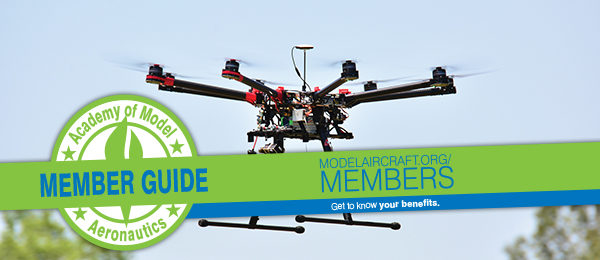Identify, Notify, and Rectify

Written by Chad Budreau AMA in Action Column As seen in the May 2017 issue of Model Aviation.
For 80 years, AMA members have found safe places to fly and enjoy this great hobby. Whether at designated AMA flying sites or in our own backyards, we seek areas with plenty of open ground, remove and avoid obstacles, and create safeguards to protect people and property. A safe flying site also requires that we remain clear of manned aircraft. AMA has some tools and resources to help guide you in keeping the airspace safe, including AMA’s See and Avoid Guidance (AMA document 540-D). In addition, you must notify all airports within 5 miles of your operations. This mandate to notify airports is not only an AMA safety measure, but public law. When notifying airports of your intent to fly, remember these three steps: identify, notify, and rectify. First, identify all airports within 5 miles of your flying site. There are numerous tools available, including interactive maps at www.learnsuas.org and http://knowbeforeyoufly.org. The maps allow you to pinpoint your location and identify nearby airports. Another popular tool is the B4UFLY app, available for iOS and Android. The app will identify airports within 5 miles of your phone’s GPS location. When we think of airports, we often visualize tall airport towers and massive runways, but airports can come in any shape and size. Any area of land or water that is designated for the takeoff and landing of manned aircraft is considered an airport. Therefore, hospital helipads and farmers’ grass runways are, in the strictest definition, classified as airports and require notification. After you have identified all of the airports within 5 miles of your flying location, you need to notify them of your operation. By doing so, airports and manned aircraft will look for you while you are looking for them (see AMA’s See and Avoid Guidance under document 540-D). Depending on the situation and airport operations, you might want to contact the airport manager or fixed-base operator who coordinates flight operations. In other situations, a letter could be a more effective and legitimate method to notify the airport of your operations. You can download a sample letter at www.modelaircraft.org/gov under the Airport Notification link. If you are conducting regular operations from a fixed location, such as an AMA flying site or your backyard, you do not have to notify the airport every time you intend to fly. A blanket notification is often sufficient. Airports will often thank you for your outreach and acknowledge the notification. Throughout the notification process, remember that you are not required to obtain permission to operate. Public Law 112-95 only requires you to notify the airport of your operation. FAA Joint Order 7200.23 also clarifies that hobbyists only need to notify the airport, not necessarily seek permission. With that mentioned, airports might raise safety concerns when you notify them of your operations, leading to step three: rectify any issues. Be receptive and sensitive to concerns and work toward a solution to mitigate any risk. If you feel you need assistance, contact AMA’s Government Relations team or the Flying Site Assistance staff. We will help guide you and help resolve conflicts. So, the next time you get ready to fly, remember: identify, notify, and rectify. Identify airports within 5 miles; notify it or them of your operations; and rectify any safety concerns. And as important, have fun and enjoy this great hobby! —Chad Budreau Public Relations & Government Affairs Director [email protected]










4 comments
blanket notification
Notification
Airport notification
Operating in Class B airspace
Add new comment